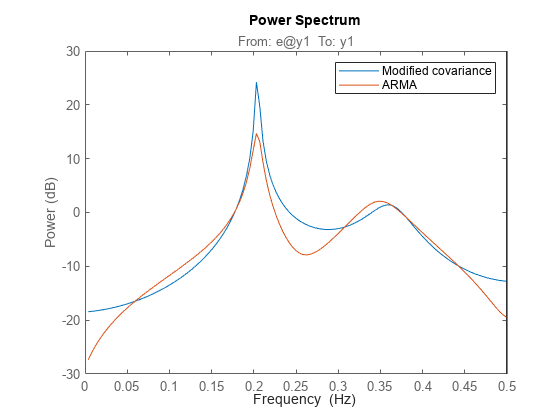输入-输出多项式模型
输入-输出多项式模型,包括 ARX、ARMAX、输出-误差和博克斯-詹金斯模型结构
多项式模型使用广义的传递函数概念,通过以下形式的方程表达输入 u(t)、输出 y(t) 和噪声 e(t) 之间的关系:
A(q)、B(q)、F(q)、C(q) 和 D(q) 是根据时移运算符 q-1 表示的多项式矩阵。u(t) 是输入,nk 是输入延迟。y(t) 是输出,e(t) 是扰动信号。
每个多项式都有一个独立的阶数,或者说可估计系数的数量。例如,如果 A(q) 的阶数为 2,则 A 多项式的形式为 A(q) = 1 + a1q-1 + a2q-2。
实际上,并非所有多项式都同时有效。更简单的多项式形式,包括 ARX、ARMAX、输出-误差和博克斯-詹金斯模型,提供了适合特定目标的模型结构,例如处理非平稳扰动或为动态特性和噪声提供完全独立的参数化。有关这些模型类型的详细信息,请参阅What Are Polynomial Models?
App
| 系统辨识 | 从测量数据辨识动态系统模型 |
函数
主题
多项式模型基础知识
- What Are Polynomial Models?
Polynomial model structures including ARX, ARMAX, output-error, and Box-Jenkins. - Data Supported by Polynomial Models
Use time-domain and frequency-domain data to estimate discrete-time and continuous-time models.
估计多项式模型
- Preliminary Step – Estimating Model Orders and Input Delays
To estimate polynomial models, you must provide input delays and model orders. - Estimate Polynomial Models in the App
Import data into the app, specify model orders, delays and estimation options. - Estimate Polynomial Models at the Command Line
Specify model orders, delays, and estimation options. - Polynomial Sizes and Orders of Multi-Output Polynomial Models
Size of A, B, C, D, and F polynomials for multi-output models. - Estimate Models Using armax
This example shows how to estimate a linear, polynomial model with an ARMAX structure for a three-input and single-output (MISO) system.
设置多项式模型选项
- Specifying Initial States for Iterative Estimation Algorithms
Specify initial conditions of polynomial models for iterative estimation algorithms. - Polynomial Model Estimation Algorithms
Choose between the ARX and IV algorithms for ARX and AR model estimation.
